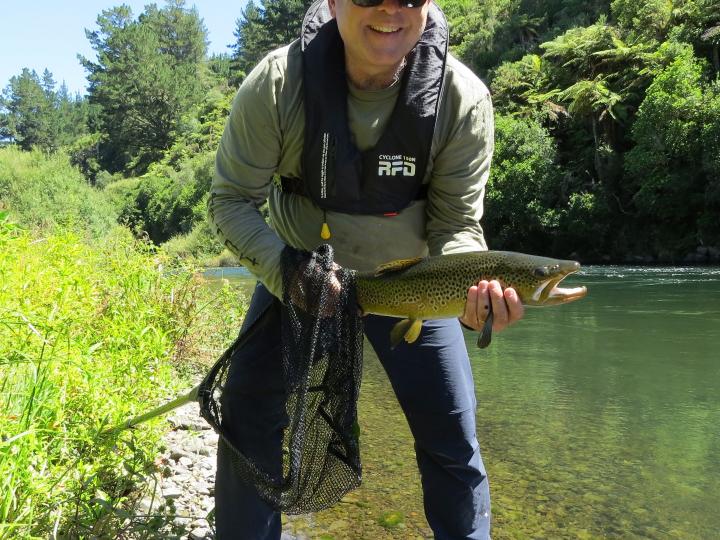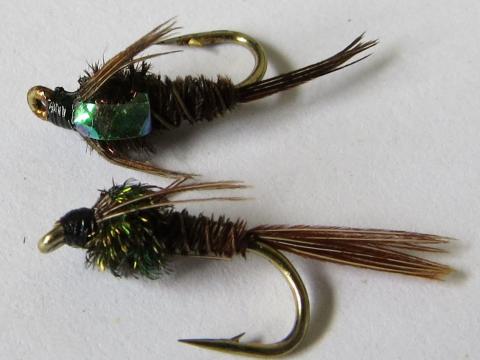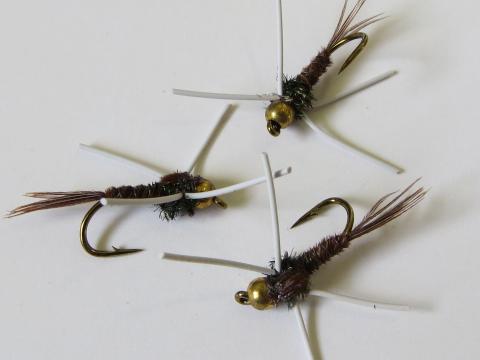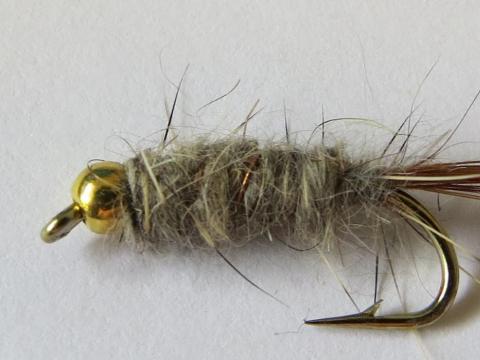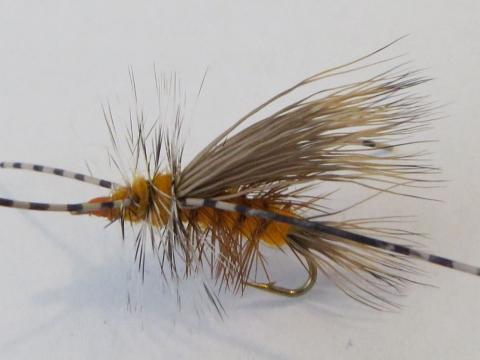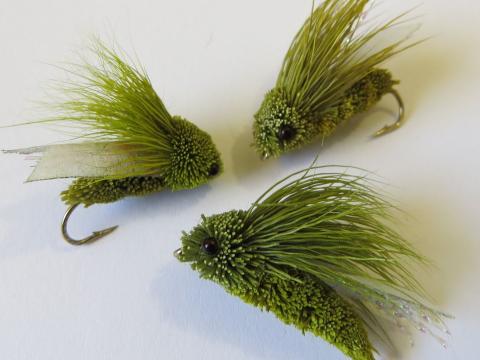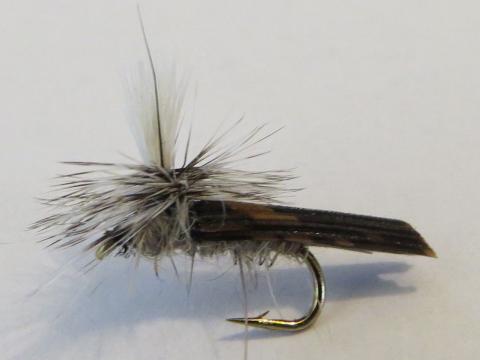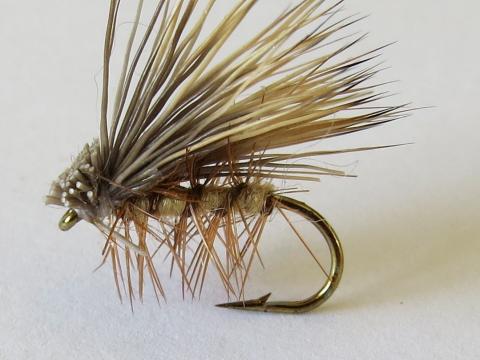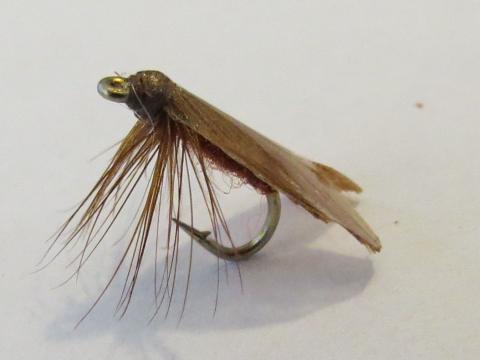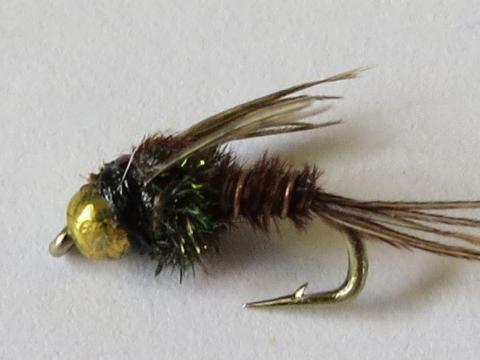I picked up Andrew at 8 AM from West End, Ohope. After a safety briefing we started floating down the river. It was a beautiful, sunny day that was going to become hot. Andrew was keen to cast a dry fly but I suggested we do a little nymphing first. He was up for anything.
We used a size 10 bead head hare and copper weighted with a size 12 pheasant tail flashback below. He is a good fisherman but I noticed he was dragging his nymphs and recasting once the indicator reached him. Unless you are getting a pretty long cast upstream, your nymphs are not in the strike zone for very long. I asked if he wanted some advice and he did. I explained how he should maximise his drift once the indicator came even with him. A lift of the rod, a slow mend then a point towards the indicator doubles the drift. You get even more if you feed a bit of line. He picked it up quite quickly and was rewarded with a hook up. He acknowledged that the day was already worth it.
After a few fish caught and lost nymphing, we set up a dry/dropper combination. The dry was a rubber legged stimulator. I am a big fan of this pattern as you can see it well and the rubber legs help with flotation. I tied on a bead head pheasant tail nymph with rubber legs below. This is a bold and beautiful pattern that sticks out like dogs balls. It is like the rubber legged stimulator without the fluff. The rubber legs are buoyant while the bead slowly sinks it. I reckon this is a really great combo for blind fishing.
And so that is how it was used as we drifted down river to the next spot. It hooked a good brown. But at the next break behind a willow tree, the first trout swam circles around it but would not take. I replaced it with a size 18 bead head pheasant tail nymph and that did the trick.
We got out at the next rapid that parted the river with a gravel island in the middle. I spotted a trout right at the head of a rapid feeding in a very small eddy. After a few casts with the same combo, Andrew hooked up with the nymph. This was a decent fish and it ran downstream in the fast water. All I could do was encourage Andrew to let it run. There was a serious flow of water and that adds a lot of pressure, everywhere. Something had to give. In this case it was the size 18 hook. We all want to stop a fish but sometimes you just need to give chase and hope for the best. And if your mates are too slow to give chase, you may lose all of your fly line. Which is exactly what happened to me a few trips ago.
So after that we put on a size 8 deer hair cicada and continued floating. You know the rules right? If it smashes it, hook. If it takes quickly in broken water, pause before striking. If it sips in slow water, count to three before striking. That's where most of us come up short. How the heck am I supposed to control my reactions when I have just witnessed the most incredible thing ever?
Well, after a few fails, the big brown came up and sipped. I counted one, two, three, strike! We were 100 m down stream when we found a spot to land this large Jack brown. Andrew became a believer after that.
So all he wanted to do was cast to sighted fish; who could blame him? In still water and small side stream situations, casting a big cheeseburger-sized-cicada does not go over so well. We spooked a lot of fish on this day.
The next success was a large rainbow on a parachute caddis. It was in a slow side stream that also has a spring creek running into it. There were ten or so good fish in a small area. Once one was spooked, all of them became agitated. They fought with each other for position then a fat hen decided she was hungry. Then she ran into some sunken trees and I somehow got her in the net before a break off.
The next still water sight fishing was done with a passion vine hopper. It was picture perfect with a nice rainbow landed in challenging conditions. The next big brown was in a very difficult spot and was a fail. The thing is that you have to challenge yourself no matter what the odds. Even if he had hooked the brown, there was no way it could be landed. Hind sight being 20/20, I should have shortened his tippet as the window to cast into was pretty small.
So the next situation called for an elk hair caddis. He caught a couple on this pattern and I cannot even remember the details.
Look, it was a great day in full sun with a cool guy who had no problem mocking me for being a feather girl. Seriously, there was quality fishing with some great fish landed. It actually makes me feel good about guiding.
Now, one serious tip for everyone: when casting a dry fly to a sighted fish, you need to make sure even the tippet does not cross in front of your quarry. Cast to the side that is most convenient for you. We spooked a lot of fish today with just the tippet. I still cannot figure out why these fish were so spooky. They get so very little pressure. Yes, I was there a few days before but Dan was nymphing in completely different areas. Maybe it was the significant number of shags seen all along the river. Lucky for them they are protected.


